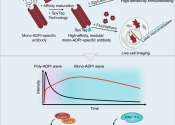New insight into how xeroderma pigmentosum causative gene products ensure the accuracy of DNA repair
Our genomic DNA is continuously damaged by endogenous factors such as reactive oxygen species, and also by environmental factors such as ultraviolet light, radiation, and chemicals. Failure to repair damaged DNA may induce ...









